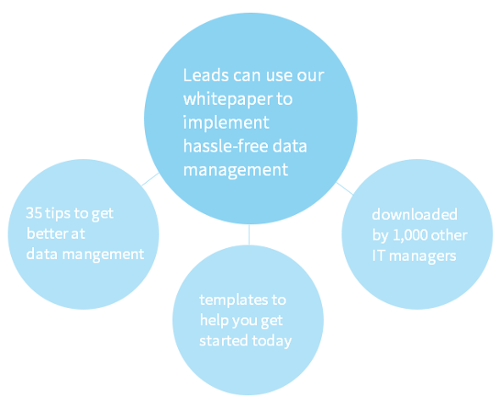Welcome to our Video Basics series, where we teach you the foundations of doing better marketing with video.
This video covers the best way to choose simple and convincing messages for your videos.
Get the Resources
Here are the free resources we mention in this episode:
- Video Academy: How to Set Achievable Video Goals
- Video Academy: Why Understanding Your Audience is Key to Great Video
Video Transcript
Here’s a common problem. You know that you need a video — and you know who it needs to connect with and what it needs to achieve. But you’re not sure what the message should be.
I’m going to show you that working out your video message can be easier than you think, and it’s based on planning you should already have done anyway.
Don’t confuse your message with the way you say it. That’s the creative concept, which we’ll look at in another video. The message of your video is the actual content or information it contains, and it needs to be decided before you get to the creative approach.
Without further ado, this is how to work out the message of your video content in 3 simple steps.
Step 1: Decide How to Affect Your Audience
You should already know your goals and your target audience for this piece of content. If not, go and watch our videos on those topics first.
Once you’ve got that down, it’s time to consider what you want your audience to feel, think and do.
Your core message rests on the action you want your audience to take after watching your video. And that action rests on how you make them feel and what you make them think. So identify specific actions your audience need to take for you to achieve your objectives.
For example, say your goal is to increase the conversion rate of your whitepaper landing pages. In this case you need your audience to download your whitepaper. To encourage them to do so, you might want to make them feel eager to learn more and think that you’re a trustworthy brand creating excellent resources.
Step 2: Choose a Core Message
It can be tempting to cram as much information as possible into your video content, but this will only dilute your message and make your video less effective. The best videos usually take a single, clear message and deliver it well. If you’re tempted to communicate too much in one video, try cutting it into multiple pieces of content, each with a one message.
Now you need to distil the action you want your audience to take into a core message that will encourage them to do it. Think about it this way: if viewers only took one thing away from your video, what would you want it to be?
Let’s return to our example. You want your audience to download a whitepaper. In this case you might decide on a core message about how viewers can use the whitepaper to implement hassle-free data management in their businesses. An effective core message should be simple, relevant to your target audience, and compel them to take the right action.
Step 3: Support With Sub-messages
Although it’s best to stick to just one core message, you can make it stronger and more convincing with supporting sub-messages. These are related points used to reinforce the core message, often with examples or statistics.
We recommend choosing three to four sub-messages to strengthen your core message. You can display all of this with a message map, which is a simple tool that’ll help you visualise your entire message in all its glory.
For example, your sub-messages for the whitepaper might be that:
- it offers over 35 tips to help you get better at data management,
- it comes with templates to help you get started today, and
- it has already been downloaded by 1,000 other IT managers.
Because this method is so flexible, as long as you stick to your message map you’ll be reinforcing the core message of your video and encouraging your audience to take the right action — no matter how simple or complex your message, or how long or short your video.
Conclusion
And that’s it. That’s how you come up with a core message for any piece of video content. Now you know what you’re saying, your video will have a strong, clear purpose and is much more likely to connect with your audience and achieve your goals.
Read more:
